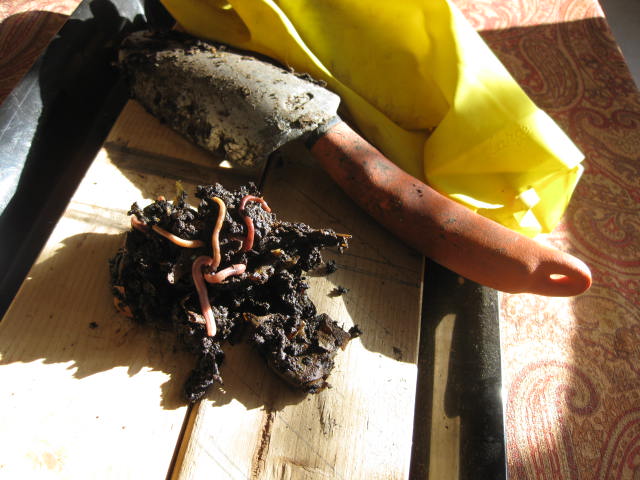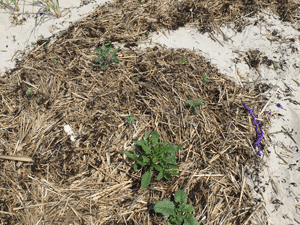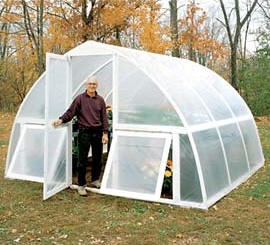Updated: May 18, 2020
Seaweed fertilizer or pond weed fertilizer is one of the best soil amendments for growing fruits and vegetables.
It improves sandy soil by adding the glue that helps bind soil particles together. Plus, seaweed has minerals that you can get nowhere else.
But, as you might expect, seaweed adds salt to your soil. A little salt is okay and even good for your soil. Too much could kill your plants.
Table of Contents
This is a long, detailed article. You can jump to where you want to be by clicking on the different sections below. To come back to this table of contents, just use the back button on your browser.
Seaweed is free!
Regular readers of SHF know by now that I hate to pay for garden soil amendments like bagged compost or fertilizer. One way to get good, free fertilizer is to harvest seaweed and add it to your compost pile.
If you live near the coast, seaweed can be free for the taking. If you don’t, pond or lake weed can provide some of the same benefits of seaweed fertilizer.
Let’s take a sec to get the legal words out of the way. This article may contain affiliate links. That means if you click and buy from my partners, I will make a tiny amount of money at no cost to you. This in no way affects my recommendations.
Too much salt
When the subject of seaweed fertilizer comes up in discussion, many gardeners say they worry about the high levels of salt.
From my experience, I know that salt from seaweed isn’t a problem. This is especially true if you compost the seaweed first.
Composting dilutes the salt as the seaweed combines with other materials. It also lets the salt leach off naturally.
That said, there is one important consideration when it comes to seaweed and salt. Worms don’t like salt.
When I add seaweed to a compost pile, worms disappear. They probably find it toxic. So if you want to do your very best to encourage worms, keep seaweed to a minimum.
Adding seaweed means adding sand
Another important point is that seaweed breaks down very fast in the compost pile. So if your seaweed has sand in it, you probably will see pockets of sand in your compost where the seaweed has decomposed and the sand remains.
Keep in mind that some sand in your garden is not bad. Some gardens can benefit from sand because it will help drainage and add missing nutrients.
If you already have sandy soil, pick only seaweed that has little to no sand. As with most things, moderation is the key.

How to Improve Soil
All the ways I know to improve your soil.
Seaweed in the compost pile
Speaking of compost piles, seaweed makes a great compost pile activator.
Experts believe this is because it naturally promotes microbial life. One reason why microbes like seaweed is that it’s very high in nitrogen. Many compost piles lack the nitrogen needed to keep them hot.

Seaweed fertilizer at a glance
- Inhibits certain insects and pests
- Increases flower production and yield
- Protects plants from frost
- Increases root mass
- Promotes better soil texture by adding the “glue” that holds soil together
- Acts as a compost activator
- Mulches with no weed seeds
- Too much can be harmful (salt)! Moderation is the key
Farmer, author and year-round growing expert Eliot Coleman says that seaweed improves sandy soil by adding the glue that helps bind soil particles together.
When you squeeze a handful of your soil it should hold together and not crumble apart. Seaweed is an ingredient that makes this possible.
Of course, if sand is included with the seaweed, this will counteract the seaweed’s binding properties.
Coleman especially likes seaweed for plants like tomatoes and potatoes. He adds it directly to the soil in fall and leaves it exposed to the elements all winter. Then, he mixes it in with the soil. This adds organic matter to his clay soil and stimulates microbial activity.
Coleman’s method is the traditional approach used by gardeners on the Maine coast.
Bigger roots from seaweed fertilizer
Some researchers have found that seaweed extract helps plants grow larger root systems.
For example, tomato plants on seaweed extract grew 80 percent more root mass than untreated plants.
In addition, the same researchers found that seaweed extract improves the cold tolerance of tomato plants. These plants endured temperatures as low as 29 degrees Fahrenheit. This is very important if you are using a hoop house to extend your growing season.
Some experts believe that adding seaweed to a planting hole for potatoes, tomatoes, asparagus or rhubarb is an excellent way to improve root growth, thereby giving them a great start.
Other expert growers believe that seaweed prevents slugs and other soft-bodied pests. This is because it forms small razor-like edges in the soil after it dries.
Salt from the seaweed may also plays a role in pest prevention. If worms don’t like the salt, it’s probably true of similar creatures.
Too far from the coast
If you don’t have easy access to seaweed or pond weed, the next best thing is store-bought liquid seaweed extract. Of course, buying liquid seaweed fertilizer isn’t free, but it has advantages.
Probably the best advantage is that’s it’s very easy to apply. Another is that you can use it for foliar feeding as well as a soil amendment.
Keep in mind, however, that some seaweed extracts are mixed with fish solutions. These combined products are very effective fertilizers, but there can be problems.
My experience is that skunks, raccoons and other creatures will pull plants right out of the ground when they smell a fish buried under your plants. You will want to make sure you have adequate fencing if you use a liquid fertilizer that includes fish.
Take these precautions when using seaweed fertilizer
- Never use live seaweed – You may damage the ecosystem. Use only dead seaweed. Exception: You can use live pond weed if it is an invasive species, such as milfoil. But you must not to spread it to uninfected water bodies.
- Make sure it’s legal – Harvesting seaweed is not allowed in some areas. If you are unsure, check with authorities.
- Use pond weed – If you want to encourage earthworms, don’t use seaweed. Salt from the seaweed drives worms away.
Have you used seaweed in your garden? How has it turned out for you? Let us know by commenting below.
Articles you might enjoy:
- Extending the Tomato Growing Season with a Hoop House
- Product Review: Neptune’s Harvest Fertilizer
- Grow Better Tomatoes with Walls O Water
Suburban Hobby Farmer is a participant in the Amazon Services LLC Associates Program, an affiliate advertising program designed to provide a means for sites to earn advertising fees by advertising and linking to amazon.com.
